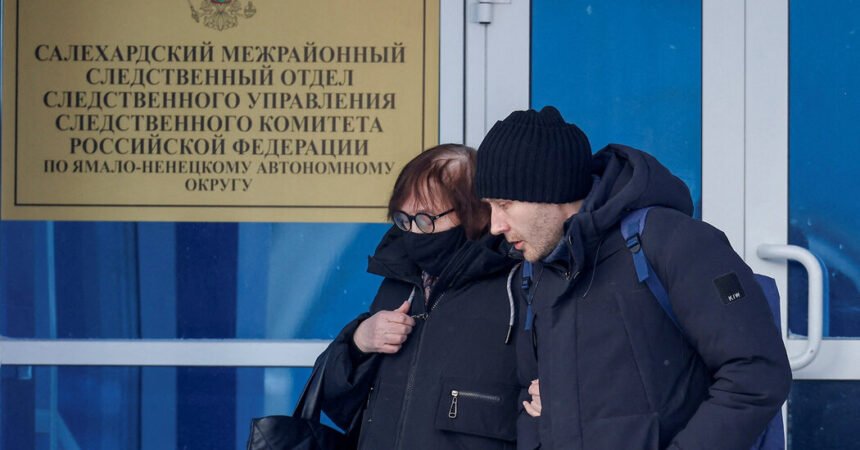Russian authorities have declared that the opposition leader Aleksei A. Navalny died of natural causes but are refusing to release his remains until his mother agrees to a “secret funeral,” Mr. Navalny’s mother and his spokeswoman said on Thursday.
Lyudmila Navalnaya, Mr. Navalny’s mother, said she had been “secretly” taken to a morgue Wednesday night, “where they showed me Aleksei.” She was shown a medical report on Mr. Navalny’s death that said he died of natural causes, according to the Navalny team’s spokeswoman, Kira Yarmysh.
But Ms. Navalnaya said she now was locked in a grim battle with local authorities in the northern Russian city of Salekhard who, taking orders from Moscow, were not releasing custody of the remains. She said the authorities warned that if she did not “agree to a secret funeral,” then “they will do something with my son’s body.”
“They’re blackmailing me,” Ms. Navalnaya said in a video posted on her son’s YouTube channel. “They are setting me conditions on where, when and how Aleksei should be buried.”
The back-and-forth over Mr. Navalny’s remains reflects how pivotal a figure he is in Russian politics even in death. The Kremlin appears to fear that a funeral drawing Mr. Navalny’s supporters could turn into a focal point for protest. There was no immediate comment from the Russian authorities on Ms. Navalnaya’s assertions.
“They want to take me to the edge of a cemetery to a fresh grave and say, ‘Here lies your son,’” Ms. Navalnaya said in her video from Salekhard, the closest city to the Arctic prison where Mr. Navalny died last week. “I don’t agree with this. I want those of you who valued Aleksei and take his death as a personal tragedy to have the chance to say farewell to him.”
As the drama played out, President Vladimir V. Putin stayed silent about Mr. Navalny and continued a publicity tour that seemed geared toward next month’s presidential election — a rubber-stamp affair Mr. Putin is assured to win, but one the Kremlin is expected to use to demonstrate Mr. Putin’s legitimacy.
On Thursday, Mr. Putin took a short flight on a supersonic bomber, a stunt that doubled as a conspicuous reminder to the West of his country’s status as a nuclear superpower.
The flight took only 30 minutes, the Kremlin said in a statement, but the range of the wide-wing Tu-160M, also known as a White Swan in Russia, allows it to reach the United States with two dozen nuclear weapons aboard.
Russian state television showed Mr. Putin, 71, climbing up the stairs under the giant warplane, one of the largest and heaviest in the world, before it took off from the runway of an airfield in Kazan, a city east of Moscow. The Kremlin released a video of Mr. Putin’s flight, showing him sitting in a pilot’s seat.
Upon disembarking the plane, Mr. Putin told reporters that the flight left a good impression and praised the new modernized bomber as “very reliable.”
Dmitri S. Peskov, the Kremlin’s spokesman, told state television that Mr. Putin made the decision to take the flight spontaneously on Thursday when he visited an aviation factory in Kazan, where he inspected four modernized Tu-160M bombers.
But since he became Russian president more than two decades ago, Mr. Putin has become known for publicity stunts, designed to cast him as a strong leader of a great power.
Over this time, Mr. Putin has flown in a fighter jet, plunged into the sea in a submersible and steered Siberian cranes to their winter habitat in a motorized hang glider. The widely covered stunts projected Mr. Putin as a physically fit and fearless leader.
The flight on the bomber appeared to be an effort to send a pointed message amid the most dire geopolitical conflict between Moscow and the West since the darkest times of the Cold War.






